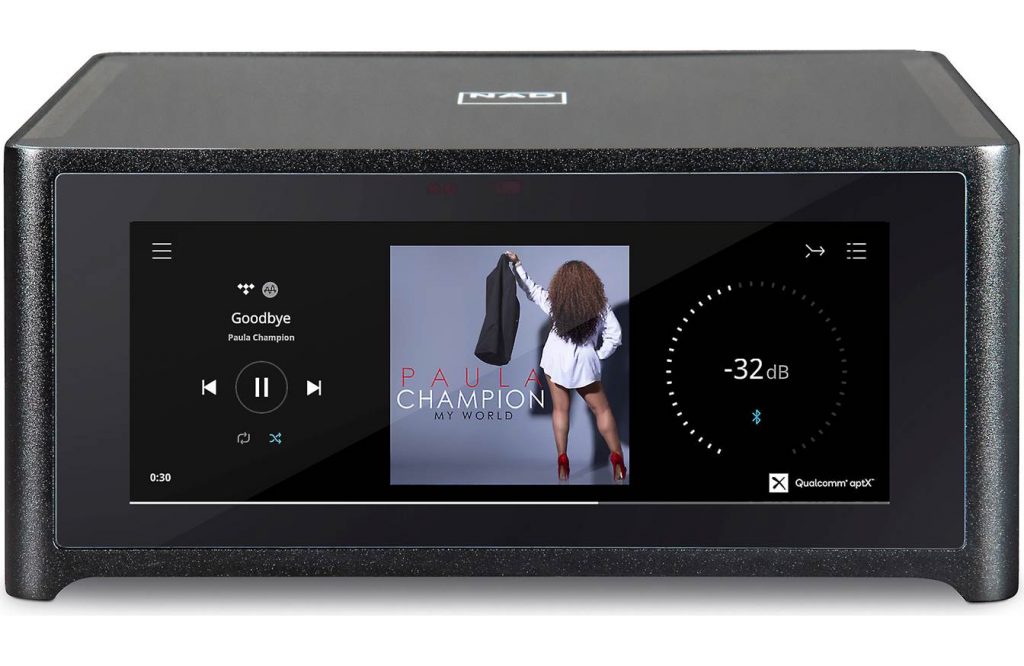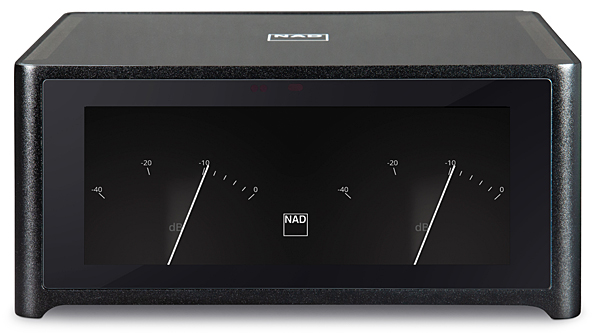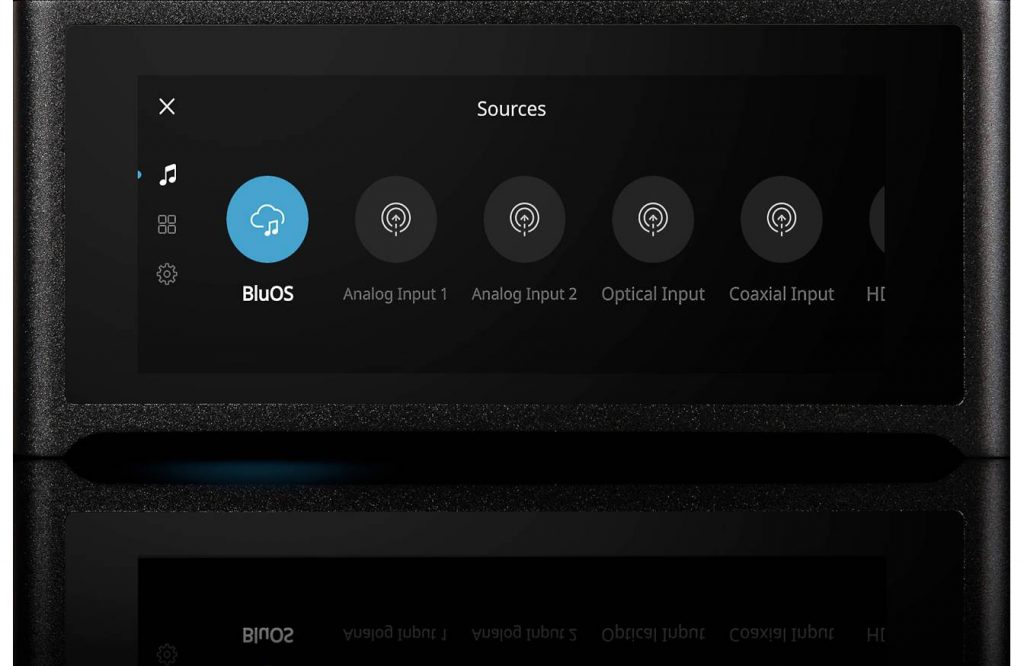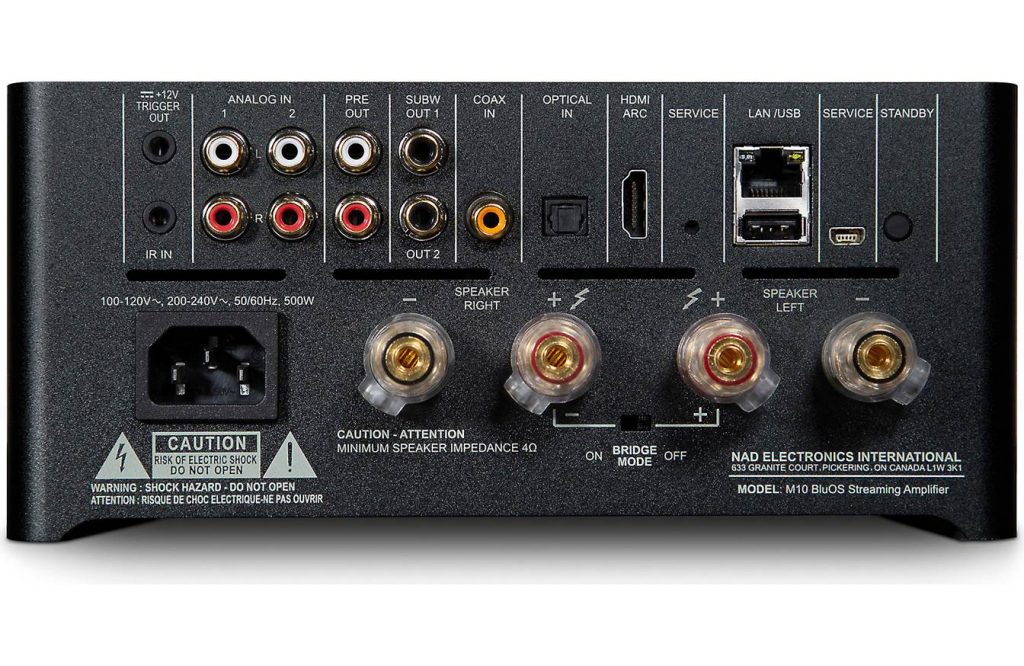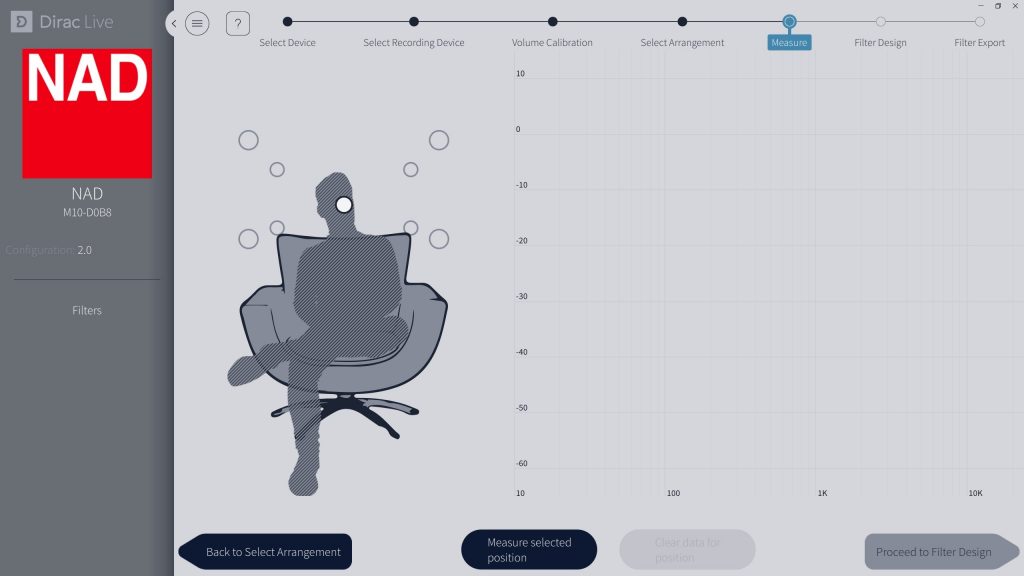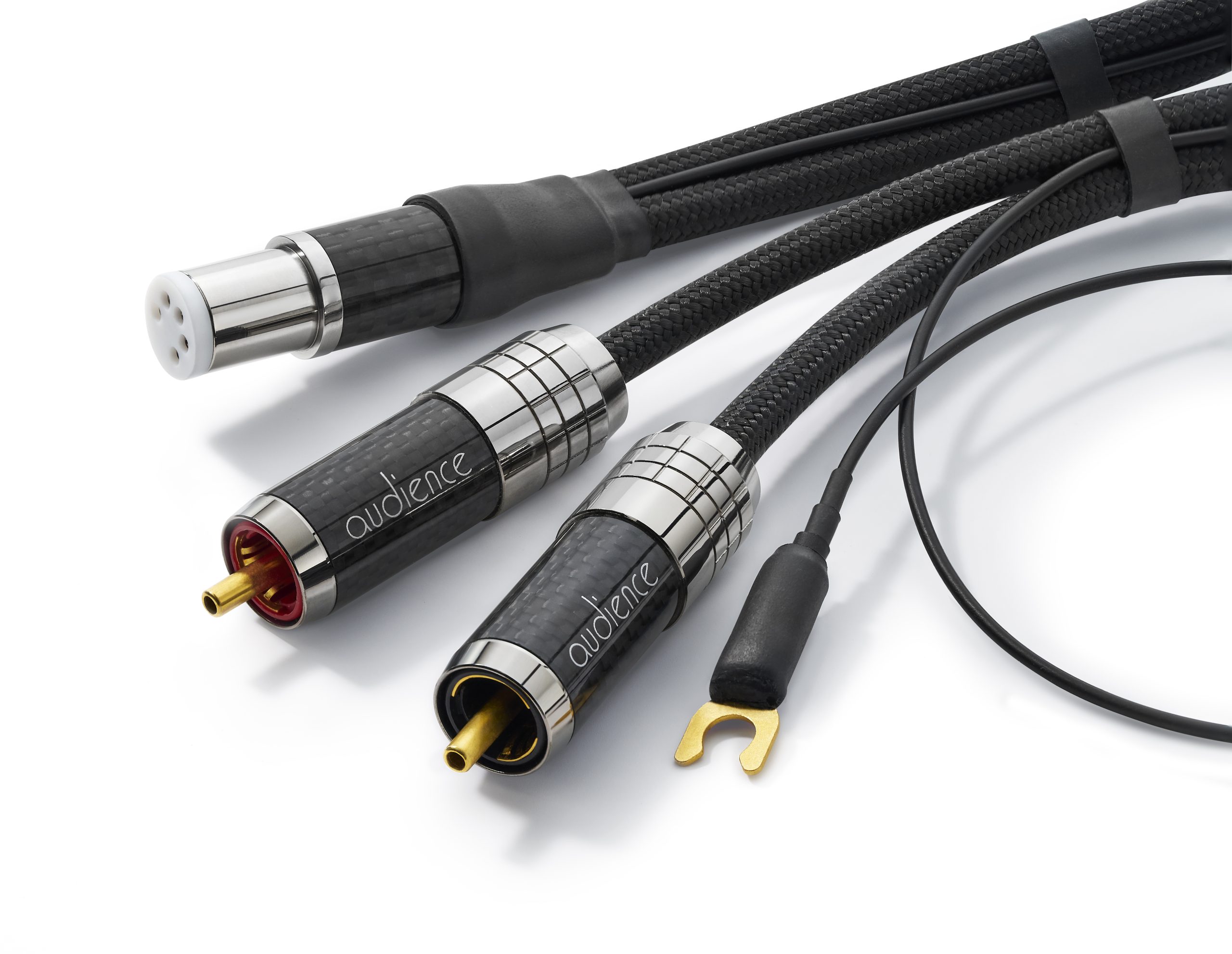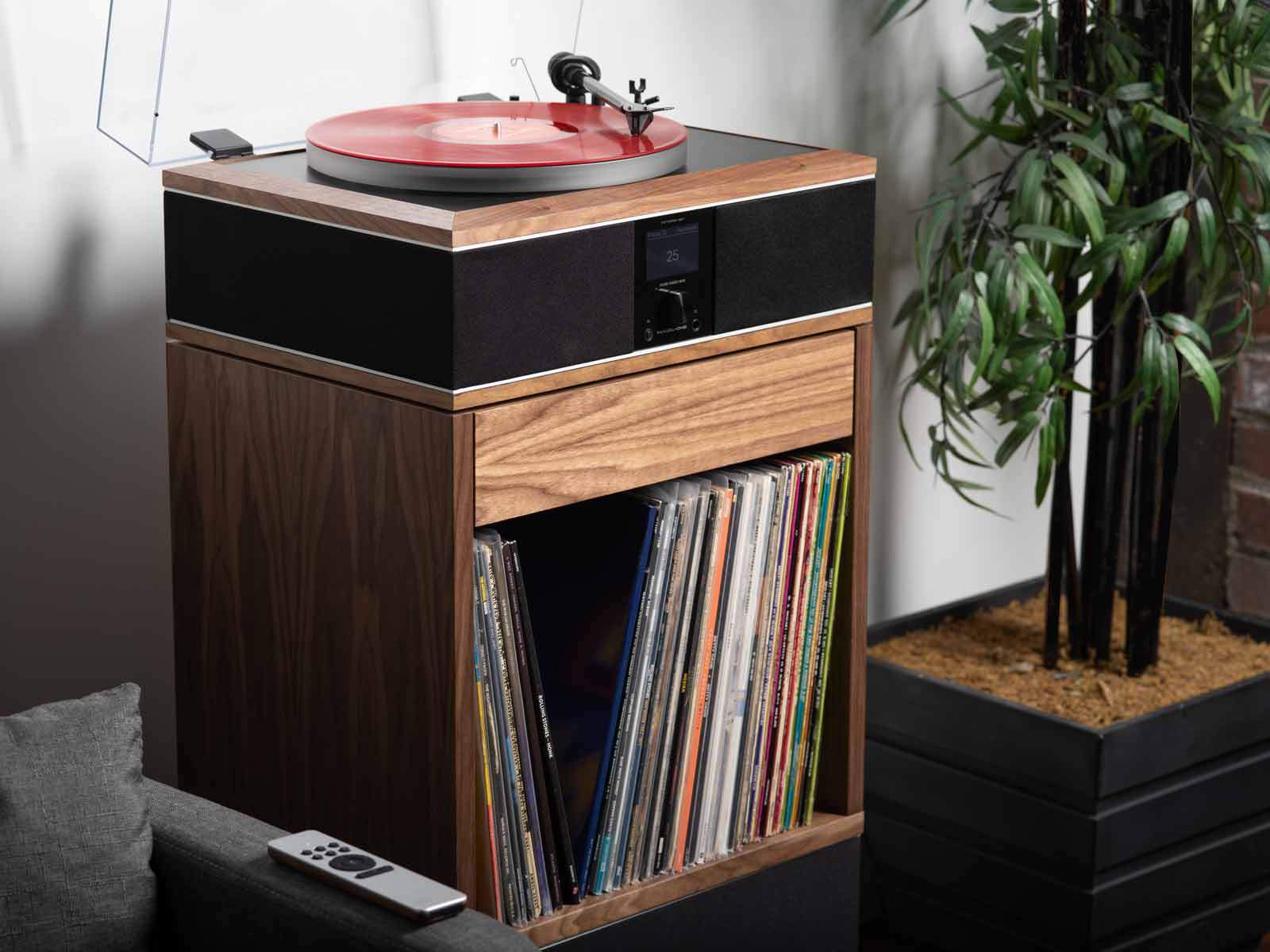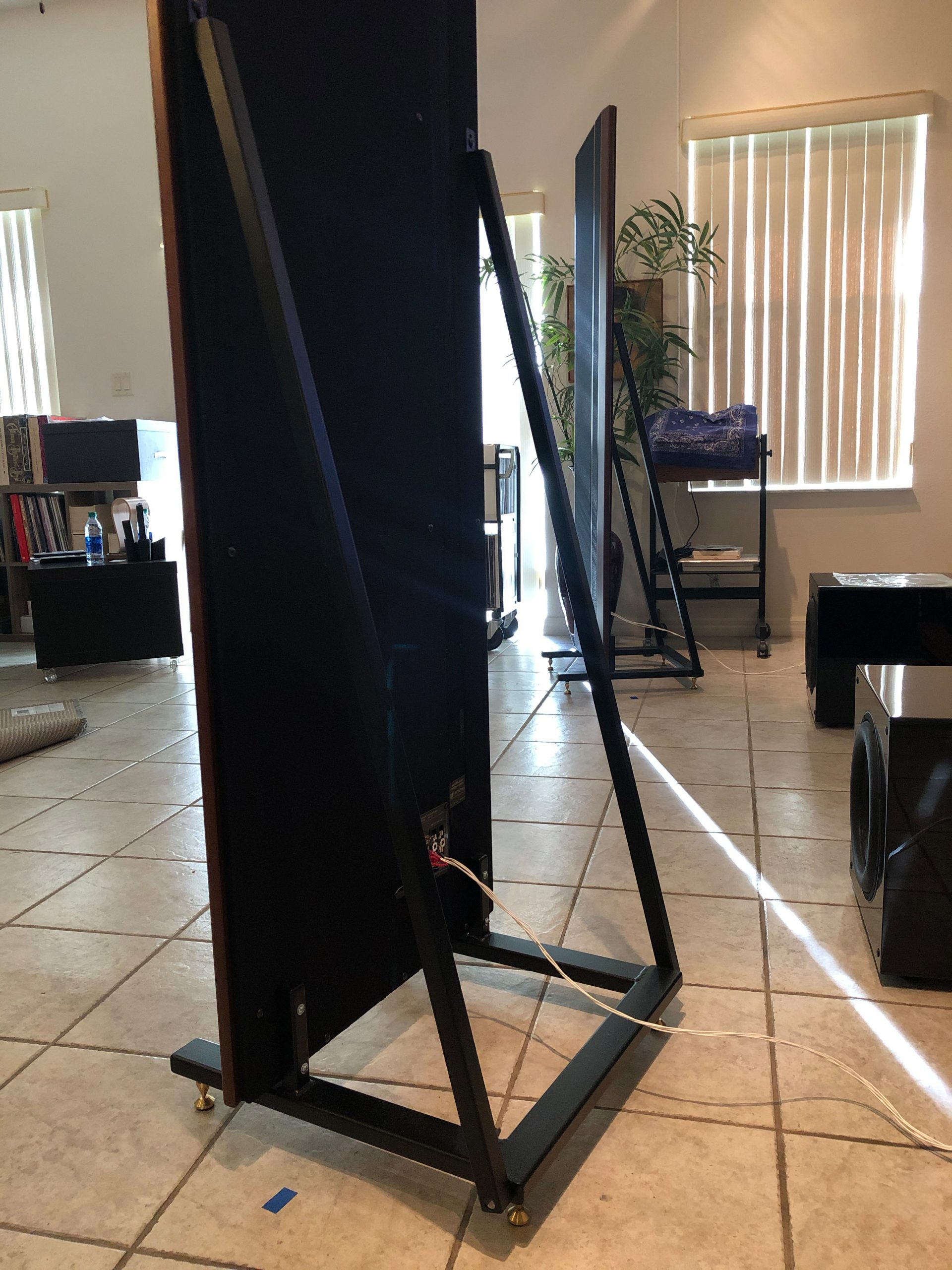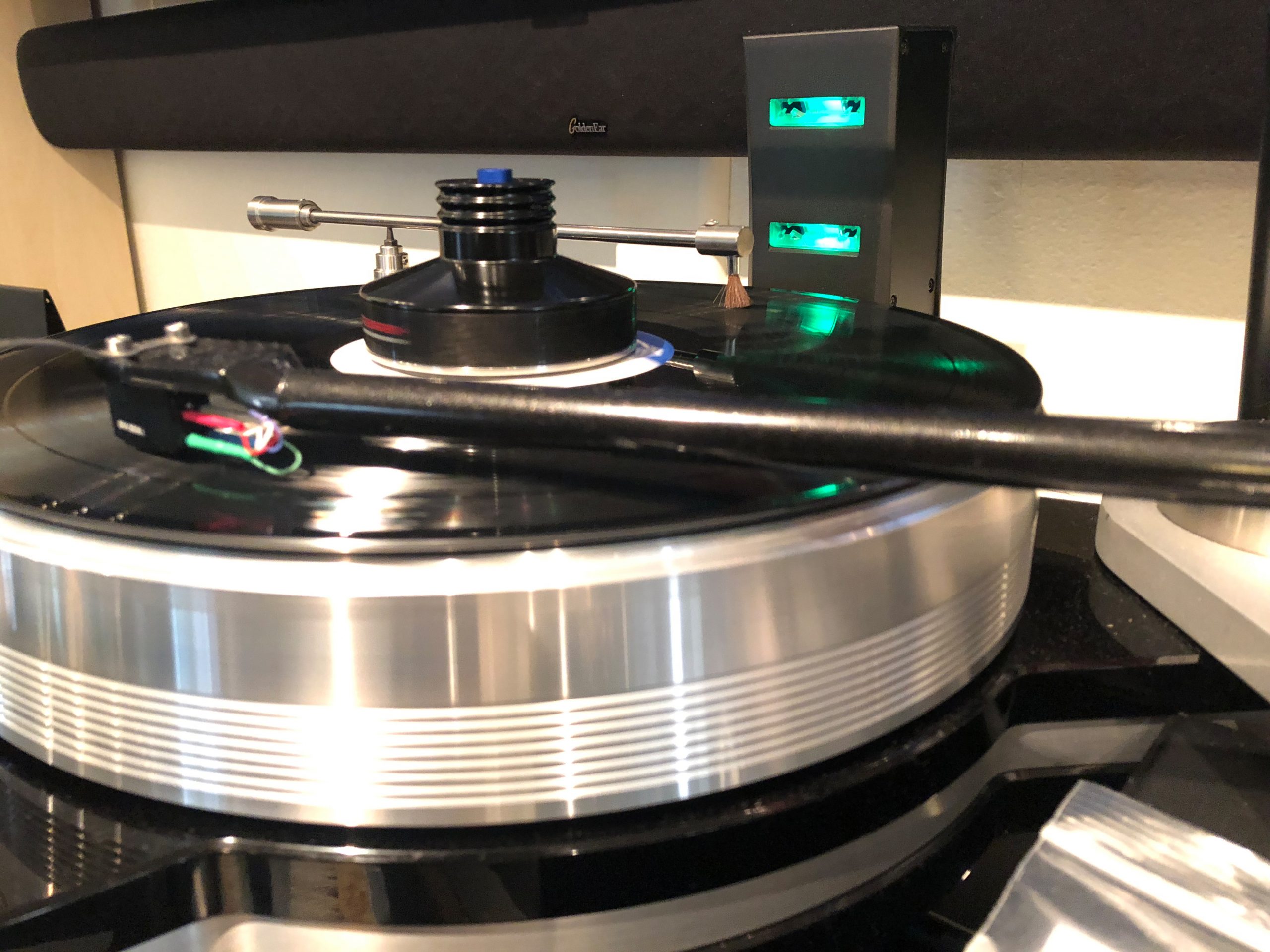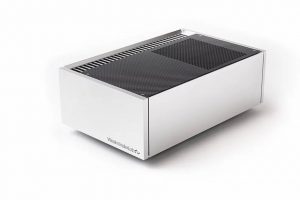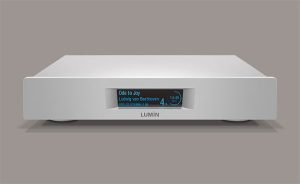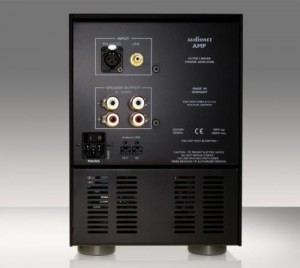Music lovers come in all stripes and colors. As much as I love the multi box room dominating rack of separates which make up my reference audio system, that kind of space and financial commitment isn't realistic for, or desired by everyone. Often a more modest space saving approach is called for. What then? I think we can all agrees that everyone deserves great music and great playback in their lives. However, finding the right solution can be daunting. If the above speaks to you, NAD's new M10 integrated streaming amplifier should be at the top of your list. This über stylish, and equally compact all in one component strikes the prefect balance between best in class sound, performance, design, capability, footprint, and price point. Will it replace a rack full of reference level separates? No, but that's not what the M10 was designed to do. The M10 is the perfect lifestyle product for those in search of an all in one audio component that sounds great, saves space, is easy to use, easy on the eyes, and easy on the wallet.
At just 8.5" x 10.25" x 4" (WxDxH) and weighing only 5lbs the M10 easily fits into the tightest spaces. Despite its diminutive footprint, the M10 delivers big, bold, badass sound via its 100-watts per channel of Class D Hybrid Digital nCore amplification! Cast aside any perceived notions you might have about Class D amplification. The M10 sounded positively A+, easily driving a pair of 87dB, 8Ω KEF R3 Bookshelf Speakers (HERE) to acceptably loud, if not ear splitting levels, and never losing its grip on the music. Nordost Purple Flair speaker cables expertly carried the signal from M10 to R3. Bass reproduction is tight, snappy, and deep with no shortage of punch and wallop. Upper frequencies are delivered with clarity, and details retrieved without aggression or fatigue. The mid band is equally well treated with a fleshy, natural sound. Overall, the M10 is very musical indeed, with either digital or analog sources.
Sporting a high quality 32-bit/384kHz ESS Sabre 9028 DAC and BluOs operating system, the M10 sounds as good as it looks. Operation is easy, flexible, and intuitive. It's important to state up front that while this is a digital piece, it doesn't sound digital, quite the contrary. In fact, as a dyed-in-the-wool analog purist with a built in bias against, and suspicion of digital playback, the M10 was surprisingly good, and a reality check. Not that it sounds analog either, but it does eschew many of digital's most common sonic pitfalls, and instead offers a neutral, natural, and musical presentation. In my room the M10's soundstage was focused rather than expansive, resulting in a more intimate listening experience. Imaging was excellent, with instruments and vocalists clearly placed and easily identifiable.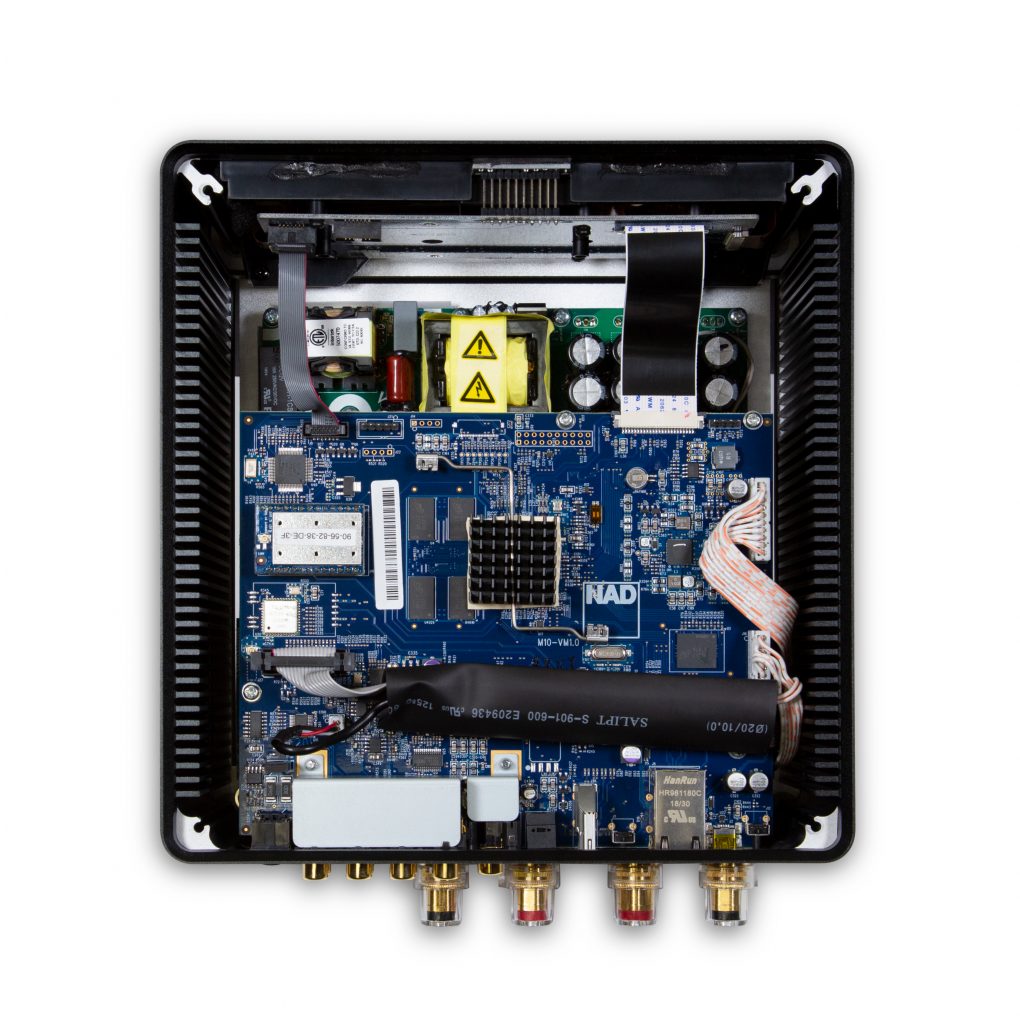
The M10 has been dubbed "Future-Fi" and "Kallax-Fi" by a few of my colleagues for its forward thinking, all in one, compact, stylish design. I'm going with "Simplif-Fi" because at its core the M10 was created and excels at delivering great sounding audio playback with few compromises in a simplified, streamlined package. Plug it in, connect it to your home network, attach a set of speakers or pair it with a set of Bluetooth headphones, and you're off to the races—done! It doesn't get much simpler than that.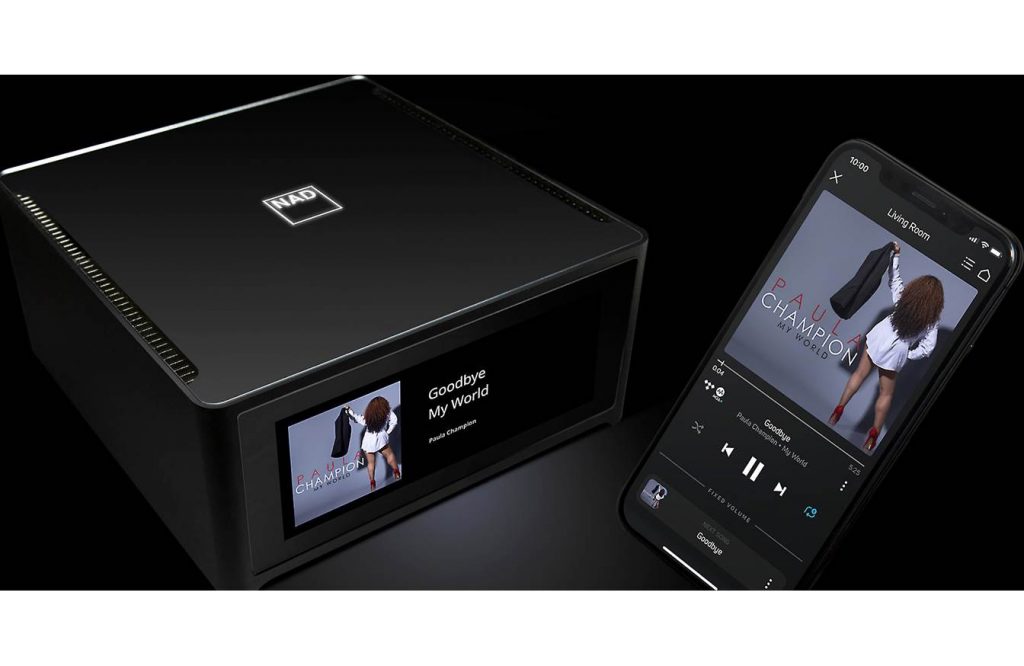
It should be noted that you will need a smart device such as an iPad, iPhone, or Android to control the BluOs app, which in turn controls many of the M10's most often used features. This smart device and BluOs app combo essentially become the remote control for the M10, as absent that none is included. For those traditionalists who long for a proper remote, the M10 does allow any IR remote to be paired and trained via the BluOS app to control the M10. This is useful as I found the BluOS app's volume control herky jerky compared to the smoother more incremental volume control provided using a proper IR remote. The BluOS app is also used when pairing Bluetooth headphones, a somewhat hidden feature that had this reviewer losing his mind for about an hour trying to figure out. Speaking of headphones the M10 has no headphone jack. Instead the M10 offers 2-way Bluetooth, allowing you to stream to it from a smart phone, etc, or from it to a pair of wireless headphones. Therefore, if you want to use headphones with the M10, they'll need to be Bluetooth, aptX HD, and AAC audio codecs. For this I choose HiFiMAN's excellent Ananda BT Wireless Bluetooth Headphones (HERE). These two products were seemingly made for each other, their pairing was nothing short of sublime.
The M10's sleek black box chassis, a case study in beautiful industrial design, and sure to be a hit with Apple fans, looks as though it could easily have emerged from Jony Ive's workshop. There are no knobs, no buttons, no nothing. The entire front panel of the M10 is a beautiful backlit 7" glass TFT color touch screen used to control many of the M10's functions and features. Here you can choose inputs, control volume, view album art, or watch digital VU meters swipe back and forth as music plays. The top of the M10 is a sheet of glossy black gorilla glass with NAD's logo in the center. The logo is illuminated, white while the unit is on, and red when it's sleeping. The M10 has no power switch. Despite always being on it automatically goes into a power saving sleep mode when no signal has been detected for 15 minutes.
NAD has gone a long way to make the M10 highly customizable, a welcome and useful feature allowing you to tailor the M10 to your specific preferences. The front touch screen panel and top logo brightness can both be adjusted as desired, input icons can be customized or hidden using a menu of choices, and you can control what you see on the front panel during playback: album art only, album art and text, or VU meters, among a raft of other useful settings. I choose the turntable icon to give the VPI Cliffwood I had connected to one the M10's two analog inputs its due, and hid the unused inputs. During analog playback the M10's super cool blue and white digital VU meters automatically display on the front panel. With digital streaming you have your choice of VU meters or a variety of album art and text combinations, I choose album art and text. Album art, text, and the VU meters all look fantastic on the M10's display panel! The screen is large and easy to read from a distance, the display bright and colorful with plenty of contrast and saturation. Another cool feature is the M10's ability to detect a digital signal and automatically switch inputs from analog to digital. In my tests this doesn't work the other way around.
Lets' talk about analog played through a digital integrated. Can you use a turntable with the M10? Absolutely, the M10 has two analog inputs. You will need an outboard phono stage such as NAD's PP2E. Is it still analog? Maybe, maybe not, I don't know. In the strictest sense of the word, no, it is no longer analog. What it is, is analog which has been converted into digital and back again to analog. Prior to the M10, a description like that would have given me chills. To test the M10's analog chops I connected a VPI Cliffwood turntable equipped with Audio-Technica AT-OC9XML moving coil cartridge via Nordost's Purple Flair interconnect and their new Blue Heaven tone arm cable (review forthcoming) to two different phono stages, the Moon by SimAudio 310 LP (solid-state) and the ModWright PH 9.0 Tube Phono Stages (reviews forthcoming). What I can tell you is that surprisingly both iterations sounded perfectly acceptable to this vinyl loving snob. At the end of the day, the ModWright PH 9.0 took first place when paired with the M10 as its tube design helped add back some analog warmth to the signal.
NAD explained that analog inputs are converted to a very transparent TI ADC (analog to digital converter) allowing users to stream their LPs to Bluetooth headphones, multi room BluOS speakers, and take full advantage of Dirac Live LE room correction filters on all sources. This makes perfect sense, and I have to admit streaming vinyl records to my Ananda BT Wireless headphones is awesome. I had reminded myself that many integrated solutions, such as KEF's LS50 Wireless speakers, pipe all sources through their DAC. The big takeaway is that despite the M10's analog to digital to analog conversion, vinyl still sounds every bit like vinyl. Trust me, I'd be the first one to tell you if it didn't.
Obviously digital playback, and specifically streaming, are the M10's main bailiwick. It's BluOS app provides a fully fleshed out interface that's easy to use, intuitive, and feature rich. That said, one of the M10's many compelling features for me was its ability to be used as a Roon end point. Therefore the lion's share of my digital listening was done using a combination of Roon streaming Qobuz and Tidal. Unfortunately there are many streaming services unavailable via the Roon ecosystem. Case in point Idagio's excellent new classical music streaming service, unavailable via Roon, easily accessible with BluOs! With its sheer number of supported and built in steaming services, BluOs easily wins the options war, and you get a Roon end point to boot. In other words the M10 gives you best of all worlds.
When it comes to inputs and outputs, the M10 is no slouch with 2 analog RCA inputs, coax, optical, HDMI ARC, LAN/USB, 12v trigger and IR inputs, 2 sub-woofer outs, a preamp out, a service port, and 4 high quality binding posts compatible with banana and spade cable terminations. The M10 can also be configured for bridge mode via the back panel.
The M10 supports home integration from leading companies such as Amazon's Alexa, Apple, Crestron, Control4, and Lutron. While I was unable to test them all, I did find Alexa integration spotty with some commands working and others not. Basically music start, stop, and volume control via Alexa was a yes, everything else I tried via the list of available commands was a no go. Your mileage may vary.
Dirac Live LE room correction software is also included! Very useful indeed for those with less than perfectly treated rooms. A wired microphone and cardboard stand are included for use when taking room measurements. The process takes a bit of time and patience, but ultimately, it's well worth the effort. Dirac software allows you to create and customize multiple corrections, easily switching between them to assess their effect. In fact, even the lite LE version included free allows specify frequencies to be isolated and corrected while everything else remains unaffected. If even more control is desired a license for the full version of Dirac can be obtained for $100. Got boomy bass but magical midrange, like I did? Reign it in using Dirac by targeting only the bass frequencies, that's powerful stuff right there!
At $2749 is the M10's juice worth the squeeze? In a word, yes. The M10 is well worth it's asking price. Especially when you consider everything you get for your money with this compact sonic powerhouse. Packed inside the M10 is a 100-watt per channel Class D Hybrid Digital nCore amplifier, a preamp with two analog and four digital inputs, a high quality ESS Sabre 9028 DAC, two way transmit and receive Bluetooth, a ROON end point, built in Dirac Live LE room correction software, and an extremely versatile streamer that provides access to dozens of streaming services. I didn't even know that many streaming services existed! This all represents a ton of value in this reviewer's humble opinion. Add to that how great the M10 sounds…and looks, and it's really a no brainer. What I look for in any piece of audio equipment is a natural, engaging, dynamic, revealing, and musical presentation which ideally requires a minimum of fuss to achieve. The M10 easily checks all those boxes. So much so in fact that I ponied up the dough and purchased an M10 for myself.
M10 BluOS Streaming Amplifier
Retail: $2749
NAD




